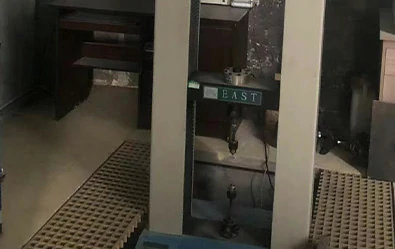loading...
- No. 9, Xingyuan South Street, Dongwaihuan Road, Zaoqiang County, Hengshui, Hebei, China
- admin@zjcomposites.com
- +86 15097380338
- Welcome to visit our website!
floor grating
Understanding Floor Grating A Comprehensive Overview
Floor grating is a crucial component in various industrial and commercial applications, serving both functional and aesthetic purposes. This article delves into the definition, types, benefits, and applications of floor grating while examining its importance in modern construction and safety practices.
What is Floor Grating?
Floor grating refers to a framework of metal or plastic panels with openings that allow for the passage of light, air, and, in some cases, water. Typically made from materials such as steel, aluminum, or fiberglass, these grates are designed to provide a safe walking surface while also allowing for drainage and ventilation. They are commonly used in environments where slip resistance, strength, and durability are paramount.
Types of Floor Grating
There are several types of floor grating, each tailored to meet specific needs
1. Steel Grating Known for its high strength and durability, steel grating is ideal for environments with heavy loads. It is often used in manufacturing facilities and warehouses.
2. Aluminum Grating Lighter than steel, aluminum grating is resistant to corrosion, making it suitable for outdoor applications. It is commonly utilized in marine environments, where exposure to saltwater can be detrimental to other materials.
3. Fiberglass Grating This type is non-conductive and resistant to chemical exposure. Fiberglass grating is often found in industries such as wastewater treatment and chemical processing, where it can withstand harsh environments.
4. Plastic Grating Generally used for lightweight applications, plastic grating is often employed in residential settings or for decorative purposes in landscape design.
Benefits of Floor Grating
The use of floor grating offers numerous advantages
- Safety One of the primary benefits of floor grating is its slip-resistant surface, reducing the risk of accidents in high-traffic areas. Many gratings are designed with serrated surfaces that provide additional traction.
floor grating

- Lightweight Yet Strong Many floor gratings offer exceptional strength-to-weight ratios, allowing for easy handling and installation without compromising structural integrity
.- Versatility Floor grating can adapt to various environments and applications, from industrial sectors to commercial buildings and even residential areas.
- Easy Maintenance The open design of floor grating allows for easy cleaning and maintenance, as debris can fall through the openings instead of accumulating on the surface.
- Cost-Effectiveness With their durability and low maintenance needs, floor gratings can represent a cost-effective solution for flooring needs in the long run.
Applications of Floor Grating
The applications of floor grating are wide-ranging, found in many industries
- Industrial Settings Factories and warehouses often utilize floor grating to create safe walkways over machinery and equipment while allowing access to drainage systems.
- Commercial Spaces Shopping malls and office buildings may incorporate floor grating as part of their design, providing both safety and aesthetic appeal.
- Outdoor Areas Parks and recreational spaces sometimes feature grating in walkways or decking around bodies of water, allowing for effective drainage and minimizing standing water.
- Transportation Hubs Airports and transit stations utilize grating for walkways to ensure safety and facilitate stormwater management.
- Marine and Chemical Industries As mentioned, the resistance to corrosion and chemicals makes fiberglass and aluminum grating ideal for platforms, walkways, and catwalks in these sectors.
Conclusion
Floor grating is a vital element that enhances safety, functionality, and efficiency in various settings. Its ability to withstand heavy loads while providing slip resistance makes it an essential choice for industries worldwide. As technology advances, the materials and designs of floor grating continue to evolve, ensuring that they meet the demands of modern applications. Investing in high-quality floor grating is not only a step towards improving safety but also a commitment to sustainability and durability in construction. Understanding the different types and benefits of floor grating can help individuals and businesses make informed decisions, ultimately leading to safer and more efficient environments.
-
The Rise of FRP Profiles: Strong, Lightweight, and Built to LastNewsJul.14,2025
-
SMC Panel Tanks: A Modern Water Storage Solution for All EnvironmentsNewsJul.14,2025
-
GRP Grating: A Modern Solution for Safe and Durable Access SystemsNewsJul.14,2025
-
Galvanized Steel Water Tanks: Durable, Reliable, and Ready for UseNewsJul.14,2025
-
FRP Mini Mesh Grating: The Safer, Smarter Flooring SolutionNewsJul.14,2025
-
Exploring FRP Vessels: Durable Solutions for Modern Fluid HandlingNewsJul.14,2025
-
GRP Structures: The Future of Lightweight, High-Performance EngineeringNewsJun.20,2025
